As communism seemingly disappeared from view at the end of the 1980s, in a sudden and unexpected blow-out, there was plenty of triumphalism ...
The retreat of liberalism goes on
And before you know it, poof, a month has already gone by! And then, poof, another! I have been really slacking on posting, but I have been ...
Looking Back: December & January & February
December quickie: In December I ran 164 miles to bring my 2017 total to 2,505 for the year, which got me to my 2,400 mile goal. I climbed 29,800 ft, which also bagged me my 450k climbing goal for the year. I read 6 books, for a total of 94 books. My favorite for December was The Alice Network, which I talked about in my Best of 2017 book post. I traveled home for the holidays.
Running: In January I ran 204 miles and climbed 28,900 ft. In February I ran 210 miles and climbed 23,300 ft. This year I have lowered some of my goals a bit, as I have some more important things on the agenda, but I would still like to break the 2,000 mile / 400,000 ft climbing goal. I seem to be on track so far.
 |
| Sunset Speed Work at Lake Merritt |
 |
| Point Reyes Sunrise Run |
Lately a typical running week is three or four runs: a short trail run during the week, one session of road/speed work during the week, a "long" trail on the weekend and sometimes a once a week catch up road run with a friend who is training for her first full running half marathon (she has done a half before but walked a lot of it). This seems to be a good variation while still putting in enough miles but spending less time than if I did all trail runs. I still struggle to find a balance at times (and sleep is often the loser), but it'll get there!
Reading: In January, I started 6 books and put three of them down right away, for a net total of three books. I have started to be better about ditching books that don't catch my interest before I get to the halfway point. This time, I even ditched a couple in the first couple of chapters! In February, I had a better month, and read four books (no rejects!) which were all pretty good. My goal this year is one book per week, or 52 books. So far, I am a little bit behind, but I will likely catch up in August and September, when I generally have most of my vacation time.
Some of my favorites from the past two months were:
Beartown by Fredrik Backman (****)
Pachinko by Min Jin Lee (****)
A Gentleman in Moscow by Amor Towles (****)
We Were the Lucky Ones by Georgia Hunter (*****)
Travel: You know that buzzer sound when you get an answer wrong on Family Feud? That pretty much sums up my travel for the past two months. A big fat BEEEEEEP. Nothing. Okay, so not totally nothing, I guess, but mostly local. I went to Auburn for a nice hike with the family and I spent a fun game night at a friend's house, but I have slept in my own bed every single night so far this year. After spending virtually no Saturdays in my own bed from August - November of last year, it feels a little strange. Plus I have to wash the sheets more often now.
 |
| Auburn Hike with the Fam |
Well, that's the last three months in a nutshell! Before I go, I want to give a quick shout out to my friend Lisa, who besides my Mom (hi Mom!) is one of the few people who reads this. After what I would say was a difficult pregnancy, she recently had a baby boy! Congrats Lisa!
What have you been up to for the past few months? What book should I add to my list? In what month do you travel the most?
5 Ways Your Health Can Affect Your Money #1: How Sleep Affects Your Finances Remember those all-nighters you used to pull in college before ...
3 Ways Your Health Can Affect Your Money
5 Ways Your Health Can Affect Your Money
#1: How Sleep Affects Your Finances
Remember those all-nighters you used to pull in college before midterms?
Science has an explanation for the wooziness you felt right before you crashed: Going without sleep for 24 or more hours makes a person perform as if they had a blood-alcohol level of 1%—.02% more than the legal limit for drunk driving.
Most likely, all-nighters aren’t your M.O. anymore, but if you’re consistently getting just four or five hours of sleep a night, your decision-making skills may not be as sharp as they could be. And that can have implications for your money.
“Lack of sleep can cause us to make many poor decisions, all leading to negative financial consequences,” says Bob Gavlak, a CFP® with Strategic Wealth Partners in Seven Hills, Ohio. “It could be as simple as buying a magazine that you don’t need at the grocery, or as big as drastically overpaying for a new car.”
From Dan Balz in t he Washington Post today, this assessment of the credit side of President Trump's ledger makes for encouraging readin...
Amidst the turmoil, Trump can count major successes
 President Trump attends a bipartisan meeting Wednesday with members of Congress to discuss gun control and school and community safety in the Cabinet Room of the White House. (Jahi Chikwendiu/The Washington Post)
President Trump attends a bipartisan meeting Wednesday with members of Congress to discuss gun control and school and community safety in the Cabinet Room of the White House. (Jahi Chikwendiu/The Washington Post)Is skipping breakfast bad for weight loss? After all, we’ve been told for years that breakfast is the most important meal of the day. It’s s...
Is Skipping Breakfast Bad for Weight Loss?

Selling You on Breakfast
Next, I would tell you about the research that shows tapering down your calorie intake — eating breakfast like a king, lunch like a prince and dinner like a pauper — leads to a faster rate of weight loss.
In one such study, researchers assigned a set of overweight and obese subjects to one of two groups . Both groups ate the same number of calories per day, but with one key difference.The first group ate progressively smaller meals over the course of the day. Breakfast contained 700 calories, lunch 500 calories and dinner just 200 calories.
he 5×5 Workout: What is it? The 5×5 workout is very simple: five sets of five reps for no more than a handful of compound movements, three t...
Is 5×5 a Good Way to Put on Muscle?

he 5×5 Workout: What is it?
1. Foods You Don’t Like If your current diet involves regularly eating food that you don’t like, you’re probably not going to be following t...
The 3 Foods You Should Never, Ever Eat

1. Foods You Don’t Like
2. Foods That Take You Out of An Energy Deficit
3. Foods That Make You Feel Bad
Of all the dumb fitness ideas out there, the dirty bulk is one of the dumbest. That may seem like an extreme statement, but trust me on thi...
THE DIRTY BULK: FIVE REASONS TO DO A CLEAN BULK
After all, I used to guzzle weight gainers mixed with ice cream until I grew a FUPA and had more stomach rolls than abs.
Bottom line: a dirty bulk will leave you fat and frustrated, not jacked and confident.

1. CALORIC SPILLOVER
Calories In: Calories from food.
Calories Out: Calories used for daily activity and bodily function.
Caloric Surplus: When you take in more calories than your body burns each day.
2. FAT HYPERPLASIA
The result? You get stuck in permabulk mode. You gain more fat than muscle. And you may have one hell of a time getting ripped once beach season comes around.
3. DECREASED INSULIN SENSITIVITY
4. POOR NUTRITION PARTITIONING
When you gain body fat and decrease insulin sensitivity from mindless eating during a dirty bulk, you impair your body’s ability to break down food into its usable parts. THE RESULT? IT BECOMES EASIER TO GAIN FAT AND MORE DIFFICULT TO BUILD LEAN MUSCLE.
5. YOU’LL DEVELOP SHITTY HABITS
Raise your hand if you know a lifter who’s always bulking.
Raise your hand if you know a lifter who’s always bulking.
3 Essential Hamstring Stretches to Prevent Injury This is particularly true for sports and activities that involve the feet striking the gro...
3 Essential Hamstring Stretches to Prevent Injury
3 Essential Hamstring Stretches to Prevent Injury
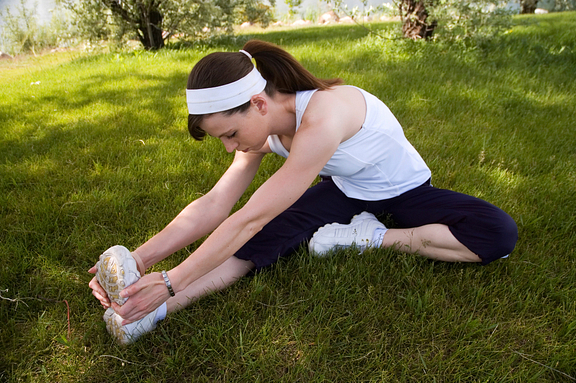
Gentle hamstring stretch
- Seated chair stretchSit at the front edge of the chair and straighten one leg in front of you, with your heel of the ground and your toes pointed at the ceiling. Then keep your back straight and lean forward over the outstretched leg. You should feel the stretch in the back of your thighs. To increase the stretch, prop your heel on a stool or second chair rather than the floor. The higher you elevate your foot, the deeper the stretch.
Intermediate hamstring stretches
- Supine hamstring stretch (also called towel hamstring stretch)Lie on the floor with your left knee bent and your left foot flat on the floor. Keeping your abdominal muscles tight, lift the straight right leg slowly upward. If your hamstrings are tight, try wrapping a belt or exercise band around your right instep and hold onto the ends, using it to help you lift your leg. When you feel a gentle stretch in the back of the right thigh, hold for at least 15 seconds, then lower the leg to the floor. Repeat 3 times per side, alternating your legs.
- Wall hamstring stretchLie on the floor with your knees bent and your hip next to a doorjamb or wall corner. Place the leg nearest the corner on the wall, with the knee bent. Slowly straighten the leg against the wall while keeping your hips flat on the floor. Hold for 15 to 30 seconds. Repeat 3 times per side, alternating between legs. If you’re already pretty flexible, try doing both legs at the same time.
5 fun fitness ideas for mom and baby Losing baby weight Is there any family event quite as special as the arrival of a new baby? Whether you...
5 fun fitness ideas for mom and baby
5 fun fitness ideas for mom and baby
Losing baby weight
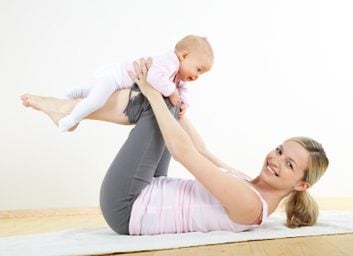
The benefits of postpartum exercise

Swimming
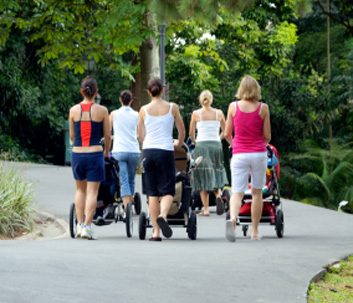
Strollercise
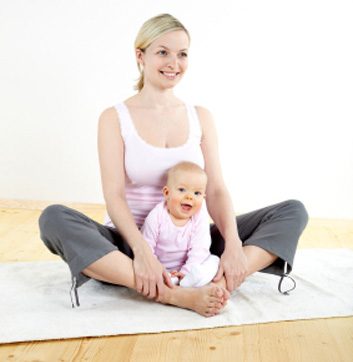
Yoga
The next concrete vote on Trump isn't until November, but pollsters and election wonks are all analysing the data furiously to see if th...
Who's voting,for whom and where? US election analysis talk
This election analysis and discussion from Politico is fascinating and a must read for students of American politics.
The wording of the famous Second Amendment to the US Constitution is this: "A well regulated militia, being necessary to the security o...
Shooting Schoolkids and mis-using the Second Amendment
"A well regulated militia, being necessary to the security of a free state, the right of the people to keep and bear arms, shall not be infringed".
My students and I saw it just a few days ago, the faded writing on the Bill of Rights displayed in the National Archives still visible. I was puzzled for a while, as in the document this is actually the fourth amendment, but it turns out the first two weren't ratified, thus pushing the famous arms amendment up to number 2 in the ranks.
I've read it a number of times, and it still seems to me that the so-called right to bear arms is very dependent on the maintenance of a militia to defend the state. It is not, thus, an individual right at all. It is very much a concession granted in the interests of state defence.
So how has this seemingly obvious interpretation become so sullied that the second amendment now becomes synonymous with individual freedom and democracy? So ingrained into the American psyche as a key element of freedom that no matter how many kids are shot in schools, the right to buy any type of weapon for individual use can never be controlled?
It turns out this is a recent phenomenon. And it's down to an organisation called the National Rifle Association, itself the front group for gun manufacturers.
As early as 1876 the Supreme Court ruled that the Second Amendment was not a granting of the right to bear arms (United States v Cruickshank). A 1939 ruling (US v Miller) maintained the link between arms and a militia. Only more recently has the Second Amendment been given such broad latitude as to imply a defence of the individual right to bear arms, most noticeably in the 2008 District of Columbia v Heller ruling.
It beats me how the so-called "originalists" - the right-wing judges who claim to adhere to the very wording of the constitution and its amendments - can possibly interpret the 2nd in any other way than the one written above - as the need to preserve a "well regulated" militia. They say the commas should be ignored and that the two clauses, on militia and the right to bear arms, are not really linked. Doesn't read that way at all, so I guess originalists are more like creativists after all. Which is just one of the many tragic ironies of the gun control debate in America.
The NRA's chief, Wayne LaPierre, has given an uncompromising defence of arms in the wake of the Florida school killings, at the CPAC conference. He trotted out the old line that all you need to stop bad men with guns is good men with guns. Do lots of "good men" hold guns? Would "good men" want to be always ready to shoot to kill I wonder?
The NRA has been so successful in its defence of the right to have guns - and thus the immediate use of a lethal killing machine right by your side as and when you want it - that it has radically altered the culture of America. From the president down, dozens of lawmakers - nearly all Republican - dance to the NRA tune. Not just because of NRA money, though some do receive lots of that, but because they have bought wholly in to a culture that now identifies the right to own the means to kill with freedom.
The kids who are campaigning so prominently and admirably for gun control now won't win. Not yet anyway. They're up against lawmakers who can witness any number of mass killings and still refuse to ban the one thing that cause them. If they do want to change, they have to be in for the long haul. That's what the NRA did, and they were so successful they even got Supreme Court Justices to re-interpret the second Amendment for them. Money and culture is still powerfully behind gun possession in America, and don't expect it to change anytime soon.
Recent headlines touted a link between daily alcohol consumption and a nearly 20-percent decrease in mortality risk — but those findings may...
Drinking Alcohol Won't Make You Live Past 90

Alcohol's health impacts
If you want to protect yourself from colds and flu, regular exercise may be the ultimate immunity-booster. Studies have shown that moderat...
You Asked: Should I Exercise When I'm Sick?

How Does Playing Sports Affect Your Health Sports and other physical activities have innumerable physical health benefits, including improve...
How Does Playing Sports Affect Your Health?
 |
| How Does Playing Sports Affect Your Health |
Weight Maintenance
Cardiorespiratory Health
Muscle and Bone Health
Cancer
Pyschological Health
Tips and Warnings
1. The Republicans have been accused of "turbo-charged" gerrymandering in order to hold on to their state and federal offices, an...
Republican Power and Evangelical Influence
At stake are not just hundreds of state legislative seats, but also control of the House of Representatives, which Republicans currently hold by a 45-seat margin.
The most shocking case is playing out right now in Pennsylvania, where Republican lawmakers in 2011 created maps so skewed that when Democrats won a majority of the popular vote the following year, it translated into only five of the state’s 18 congressional seats.
But when the Pennsylvania Supreme Court struck down the districts, the Republicans were ready. After their appeal to the US Supreme Court was struck down by none other than Samuel Alito, they moved against the elected Pennsylvania judges:
A Republican legislator this week moved to impeach the five Pennsylvania justices who voted to strike down the maps, on the grounds that they “engaged in misbehavior in office.”
And if Pennsylvania sounds bad, how about North Carolina, where electors put a Democrat, Roy Cooper, into the state house as Governor, only to have the gerrymandered state legislature quickly strip the office of as many powers as possible before Cooper took office.
Democracy in America? Not going terribly well, it would seem.
2. Meanwhile, evangelicals continue to parade their support of Donald Trump.
America's fundamentalist protestant Christians have a habit of preferring non-religious presidents like Ronald Reagan and Donald Trump, both divorcees who could hardly be seen as exemplars of Christian teaching on marriage. In Trump, they have managed to find a leader to support who has committed serial ethics violations, engages in abusive personal tweets, and can rarely be found holding to truth.
Evangelical leaders claim they do not want to judge Trump as an individual, not a tolerance they held towards Bill Clinton, or to any American citizens who happen to be gay.
In abandoning any moral stance whatsoever, evangelicals have at least revealed their colours as a partisan pressure group which merely holds its religious statements up as an umbrella for its political activism, rather than as a serious set of principles to live by. Atheists must be delighted at their overt outing.


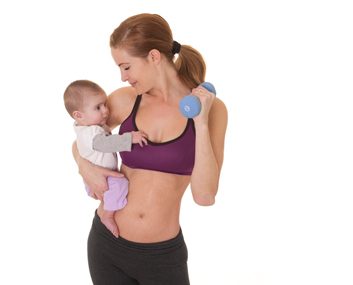






0 coment�rios: